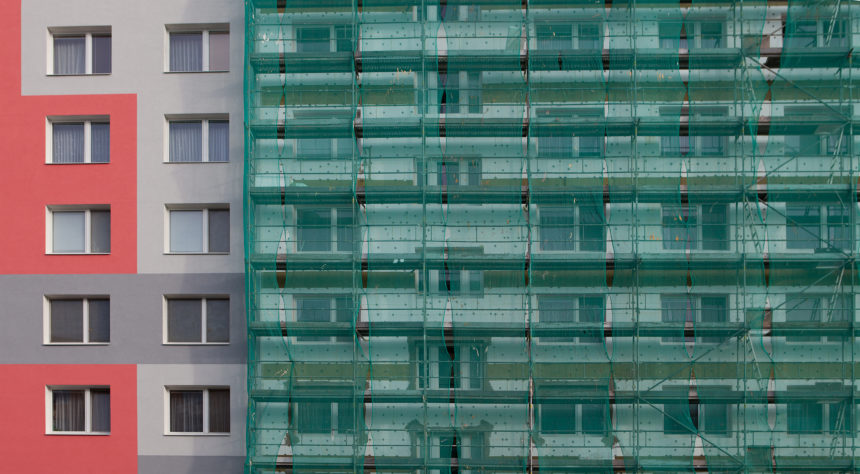What is external solid wall insulation?
External solid wall insulation – or EWI – is usually in the form of expanded polystyrene insulation board, 100mm thick, which is applied to the outside of the property with adhesive and plastic bolts for a double strength bond with minimal cold bridging. This is then rendered to create a really smart finish in a variety of colours.
What is Internal solid wall insulation?
Internal solid wall insulation very similar to external wall insulation, except that the insulation is applied to the inside of the property rather than the outside. Since it gets hit less by the elements on the inside, the final finish is less ‘protective’ but it still goes a huge way to reducing your energy bills.
Internal insulation typically takes the form of PIR board like celotex, applied to the internal walls, or a stud wall with plasterboard then
placed over the top. This then means that the insulation is sandwiched between the plasterboard and the brick wall.
Should you insulate internally or externally?
In our opinion, the best option is to insulate externally (although we can insulate you property internally if external wall insulation is prohibited for any reason e.g. planning constraints).
The advantages of insulating solid walls externally
This is consistent across both internal and external solid wall insulation – they both help improve the energy efficiency of the property, but the advantage of external over internal is you are not limited by space. Insulating internally obviously shrinks rooms, but doing so externally has no impact on this – so while you could easily attach 150mm of external wall insulation to a solid wall, if you were to do this internally the rooms would be much smaller which when you take into account today’s property prices is a huge issue.
External wall insulation stops penetrating damp in its tracks – the waterproof render applied to the outside of the walls creates a barrier to the elements and stops the passage of water through the insulation / wall into your home. If insulation is applied internally then you can still get water ingress through the walls of the property – which can’t go anywhere since it is trapped behind the insulation, which can then lead to problems further down the line.
EWI gives you the opportunity to improve the look of the property – External insulation gives you the chance to smarten up your property with new render, guttering and any other fittings. In fact, the cost of insulation plus render isn’t that much more than applying simple render without insulation, so it is a bit of a no brainer if you are re-rendering anyway. For those of you with pebble-dashed properties, the render creates a much easier on the eye finish (from our point of view!) and we have seen an enormous amount of business from this type of property to bring their look into the 21st Century.
No loss of room – External insulation does not decrease the internal area of the property, so you won’t lose precious space in your home. Something especially Londoners and other city dwellers can ill afford with the price of floor space.
External insulation does not require internal works, so there is no disruption to living area while the works are carried out. Internal insulation causes a huge amount of disruption while the work is taking place, with radiators, furniture and appliances all potentially requiring resiting.
With External wall insulation you can get away with having no stud wall – Stud walls can be really irritating in a property, as they usually can’t take very much weight, and drilling into them to hang a picture or support a shelf is likely to damage the vapour membrane – you can also potentially hit water pipes hidden behind the stud walls or even more dangerously any hidden wiring.
When is internal solid wall insulation preferable?
While the case for external wall insulation is pretty strong in the majority of cases, there are a few times when internal wall insulation is a better solution.
Access issues – If your external wall is in a tight alleyway preventing scaffolding, or you do not own the land that the insulation would encroach on, external insulation would not be possible and therefore internal would be the only option.
Planning and conservation areas – For some properties, for example those in conservation areas, external insulation may require planning permission, and as such may not be practical. Internal insulation defeats this problem.
If you like the look of brick, then external insulation might not be for you, as the brickwork is going to be covered up therefore internal would in this case be the way forward.
Flats – A lot of people looking to insulate their flats cannot use external insulation because it would require the rest of the block to do so too. In most instances, this is usually very difficult to push through; therefore internal insulation is often installed in individual flats within the block.
So there you have it – a brief guide on the differences between internal and external solid wall insulation. Since the price of the works is pretty much the same – we would in 99% of cases recommend insulating externally, but for some people internal wall insulation is going to be the only answer!















No comments yet